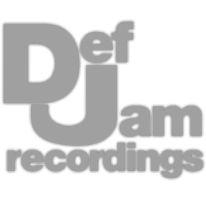Professional Analog Mastering.
Professional Analog Mastering.










Regardless of the processing that you add to your mixbus, always ensure that the effects are subtle - otherwise, you may ruin a perfectly good mix. Equalization, saturation, compression, and other typical effects are useful; however, delay-based stereo imaging should be avoided more often than not.
Before we start covering processing your mix bus, I want to make it clear that the chapters I’m covering in this video are in no particular order, they aren’t part of a chain, but just valuable info to help you make more informed decisions when mixing.
If we EQ our mix bus, we have the power to drastically alter the sound of our mix - with that in mind, amplify or attenuate no more than 3dB. Personally, I enjoy the sound of boosting the high frequencies with a shelf by about 1 to 2dB.
Another idea is to use a mid-side EQ, and use a highness filter on the lows, to make the low frequencies more mono. I personally enjoy a 6dB per octave slope for this cut and will lower the center frequency, so that the cut just slightly affects the low mids.
Like equalization, compression can do a lot of damage if used excessively on a mix bus, so be sure to attenuate your signal no more than 1 to 2dB. If you just want to control your peaks, set an attack of 10ms and release of 50ms to retain detail.
If you want more of a cohesive sound, or what’s often called mix glue - use a longer release time of 150 to 250ms. Also, if it’s available use a bus or mastering algorithm, a little bit of lookahead, and some oversampling.
All of which will reduce distortion in different ways.
With a saturator we can subtly compress our mix and add harmonics - the compression will typically be soft-knee and a little slower, so it’ll glue the sound together a bit. The harmonics will make the mix sound louder, and fuller, and can vary depending on what emulation you choose.
Tube and transformer emulation often results in a warmer sound due to second-order harmonics, whereas tape affects the mid and high mids a bit more. Again use this effect subtly. Also, if available I’d recommend using at least 2x oversampling.
Crosstalk occurs when your left and right channels bleed into one another, causing some of the right channels info to be on the left and vice versa - this results in a somewhat blended sound, but can also widen the stereo image. You can use this effect subtly.
That said, don’t conflate or confuse this effect with delay-based stereo imaging, which delays one of your channels to cause expansion. In my opinion, delay-based stereo imagers should never be used on a mix bus.
If you want your mix to have a vintage sound, try a preamp emulation - although these are marketed as going on individual channels, the hardware they emulate was often used for mastering back in the 60s and 70s. They’ll mildly distort and shape the frequency of your mix.
I like Arturia’s emulation of the v76 for this, but if you’ve found one you enjoy let me know about it in the comments section.
In short, yes, you can add reverb to your mixbus; however, the effect should be incredibly subtle, about 1 to 2 percent mixed in - otherwise your mix will sound washed out. I like to emulate a studio when doing this since it adds cohesion in a way that makes sense.
More times than not I’ll avoid adding this effect to my mixbus, but some engineers enjoy adding this in.
If you plan on processing your mix bus with effects that don’t offer oversampling, I’d recommend trying Metaplugin, which lets you house all of your effects within the plugin and create your signal chain accordingly. Up top, we notice that we can introduce oversampling to the entire chain.
I’d recommend this if you’re using a saturation plugin but it doesn’t include oversampling, since this will be the main cause of unwanted aliasing distortion in most cases.
If I could only add one processor to my mix bus, I’d choose the Master version of the Gullfoss EQ, an intelligent EQ that shapes the signal based on predetermined ideal levels for maximum perceivability. Subtle settings like 10 percent on recover and tame can really help a struggling mix.
Since the effect can’t be replicated manually, I don’t feel too guilty using it on a difficult mix.